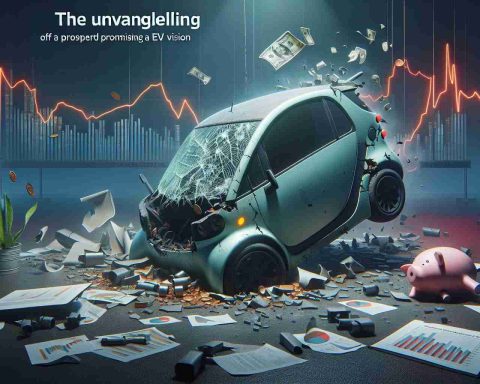The automotive world is buzzing with Mini Australia’s recent announcement that it is discontinuing the affordable Mini Cooper E and Aceman E models, just months after their launch. These entry-level electric vehicles are being pulled from the lineup, with no official explanation provided.
To facilitate the clearance of remaining inventory, Mini has unveiled substantial discounts: buyers can now snag the three-door Cooper E for $49,990 drive-away, benefiting from a $7500 reduction. Similarly, the Aceman E sees a remarkable price drop of $11,500, now valued at $51,990 drive-away.
Production of these budget-friendly EVs is set to cease by March, despite the Cooper E debuting as recently as July and the Aceman E not long after in October. Following this, the lineup will be limited to the more luxurious SE variants, priced at $58,990 for the Cooper and $60,990 for the Aceman, excluding on-road costs.
While both the Cooper E and Aceman E are equipped with a single electric motor delivering 135 kW and 290 Nm of torque, the SE models promise enhanced power with 160 kW and an expanded battery capacity of 54.2 kWh, achieving a range of over 400 km on a single charge.
With added features such as power-adjustable seats, premium audio systems, and upscale interior finishes, the SE models are positioned to appeal to a different segment of the market. As the stock of the entry-level models dwindles, Mini Australia has not confirmed how long dealers will still carry these vehicles.
Repercussions of Discontinuing Affordable EVs in Australia
The abrupt discontinuation of Mini Australia’s entry-level Cooper E and Aceman E embodies a larger trend in the automotive industry that raises significant questions about the future of affordable electric vehicles (EVs). This decision hints at a troubling pivot away from budget-friendly EV options, potentially sidelining a growing demographic of eco-conscious consumers who are eager to transition from traditional internal combustion vehicles.
Affordability is crucial for mass adoption of clean technologies, and the withdrawal of reasonably priced models may exacerbate the already existing disparities in vehicle accessibility. As the global demand for EVs expands, the automotive sector must grapple with the balance between sustainability and economic viability. The projected rise in EV ownership—forecasts indicate that EVs could make up over 30% of all vehicle sales globally by 2030—could be stunted without sufficient affordable options.
Additionally, this trend raises potential environmental concerns. Without lower-cost alternatives, consumers may be forced to remain with gasoline-powered vehicles, further delaying the transition to greener technologies and impacting national and global carbon reduction efforts. If manufacturers prioritize higher-end models, we risk a scenario where environmental benefits are overshadowed by financial barriers, ultimately slowing the shift towards sustainable transportation.
As Mini shifts its strategy toward more luxurious offerings, one must wonder: will other automakers follow suit? The ramifications could ripple through society and the global economy, affecting consumer behavior and investment in greener futures. The long-term significance of such decisions may shape the automotive landscape and the fight against climate change in years to come.
Electric Revolution Hits a Roadblock: Mini Discontinues Affordable EVs
The automotive industry is currently reeling from Mini Australia’s unexpected decision to discontinue the budget-friendly Mini Cooper E and Aceman E electric vehicle models, mere months after their introduction to the market. This surprising move, which includes substantial discounts on remaining stock, highlights a significant shift in Mini’s strategy towards its electric offerings.
Features of the Cooper E and Aceman E
Both the Cooper E and Aceman E were designed to provide an accessible entry point for drivers interested in electric vehicles (EVs). They came equipped with a single electric motor capable of delivering an output of 135 kW and 290 Nm of torque. A standout feature was their affordability, costing $49,990 and $51,990 drive-away, respectively, following recent price cuts.
Performance Comparison with SE Models
In contrast, the more luxurious SE variants set to replace them boast a more powerful electric motor producing 160 kW. Additionally, these models feature an increased battery capacity of 54.2 kWh, allowing them to achieve an impressive range exceeding 400 km on a single charge. This power upgrade positions SE variants as a more appealing option for consumers willing to invest in a premium electric driving experience.
Pricing Trends and Market Insights
The pricing dynamics in Australia suggest that Mini’s strategy aims to pivot towards a more upscale market segment. The discounts on the Cooper E and Aceman E, with reductions of $7,500 and $11,500 respectively, indicate an attempt to clear existing inventory swiftly. This reflects broader trends in the EV market, where demand for affordable models is high but may not always align with manufacturer production strategies.
Pros and Cons of Mini’s New Direction
# Pros:
– Enhanced Performance: SE models offer greater power and range compared to the discontinued models.
– Luxury Features: Additional options like power-adjustable seats and premium audio enhance the driving experience.
# Cons:
– Limited Entry Options: The removal of the Cooper E and Aceman E could alienate budget-conscious consumers looking for affordable EVs.
– Inventory Uncertainty: With unclear timelines for remaining stock availability, potential buyers may feel pressured to act quickly.
Sustainability and Future Predictions
As Mini shifts its focus towards higher-end electric models, questions about sustainability and market adaptability arise. The trend towards upscale EVs reflects a growing demand for premium features and performance, yet it may also lead to a gap in the market for affordable electric options, particularly in regions where cost-effective transportation remains a priority.
Conclusion
The discontinuation of the Cooper E and Aceman E marks a pivotal moment for Mini Australia in the evolving landscape of electric mobility. As the brand concentrates on its SE variants, it may redefine its identity within the EV segment, blending luxury with electric performance. However, how this shift influences consumer access to their electric line-up remains to be seen, especially for those who prioritize affordability.
For more insights into Mini’s transition towards electric vehicles, visit Mini Australia.














